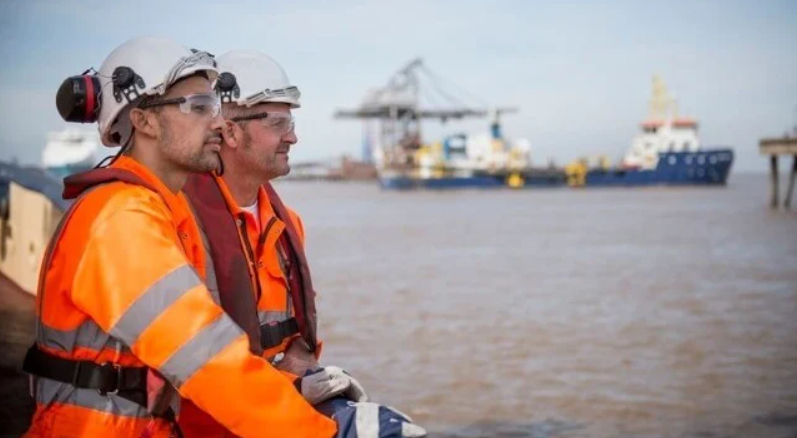

Today, cargo ships are sailing 17.4% slower than before the Lehman Brothers collapse, according to Clarkson Research experts.
Ships with bulk cargo and containers began to travel slower as a result of the financial crisis that hit the global economy after the Lehman Brothers collapse. The economies of China, Europe, and then other continents, like dominoes, began to slow down in 2008 and 2009 after the American economy. Shipping lines also slowed down.
Slow steaming. Shipowners recommended to their captains that ships between destination ports should start traveling at economic speeds and save fuel in second half of 2008. Ship operators’ awareness has also increased that “full ahead” also leads to high emissions of environmental pollutants. “Slow steaming” has become common in the shipping industry solution. The ships began traveling at 18 to 20 knots, instead of keeping services between ports at 22 to 25 knots. The timetables were drastically revised in 2008. Many operators quickly introduced management of ships from the mainland. They optimized the speed and timing of ships’ travel using IT programs. Such fleet management is already common today.
Super slow steaming. Many operators adopted the strategy of “super-slow steaming.” The captains of the ships had to slow down the ship to about 12-15 knots. The ships began to travel slower than the famous tea clippers, which exceeded 20 knots. Even faster were the windjammers in the Roaring Forties (and Les cinquantièmes hurlants), they reached 25 knots. These four-masted sailing ships from Australia to England passed Cape Horn and often reached their destination in less than 100 days (see more: Pommern – Museum Ship in Mariehamn https://eblueeconomy.com/18300-2/ ).
Clarkson Research Services analyzed the change in speed of ships compared to 2008. Calculations show that ships are sailing 17.4% slower today than in 2008. The decline in some modes of transport is increasing. Container ships have slowed down by as much as 25% in the last 12 years. The reduction in the speed of ships resulted in a reduction of the pollutants emission. In the last 10 years, shipping companies have reduced CO2 emissions by 10.7%, Clarksons Research expert calculated. By comparison, UK CO2 emissions fell by 29% over the same period, while the economy grew by a fifth, according to the Carbon Brief report.
Ships are responsible for more than 5.5% of the global emissions. If no action is taken, experts think emissions will increase as much as 2 to 3 times by 2050. A single container ship may cause as much pollution as 50 million cars. The world’s largest luxury cruise operator, emitted nearly 10 times more sulphur oxide (SOX) around European coasts than did all 260 million European cars in 2017 – the shocking data was published in the TransportEnvironment.org report.
Faig Abbasov, shipping policy manager at T&E, said: “Luxury cruise ships are floating cities powered by some of the dirtiest fuel possible. Cities are rightly banning dirty diesel cars but they’re giving a free pass to cruise companies that spew out toxic fumes that do immeasurable harm both to those on board and on nearby shores. This is unacceptable.“
Alastair Fischbacher, CEO of Sustainable Shipping Initiative, said: “The latest figures from the IMO show that, if nothing happens to the greenhouse gas emissions, emissions by ships will grow with 250% by 2050. That’s 17% of global emissions. That is unacceptable.” Sustainable Shipping Initiative (SSI) wants the International Maritime Organisation (IMO) quickly to make firm commitments to significantly reduce CO2 emissions from shipping – inform Better World Solution Portal.
Fleet at anchor. The average speed of the ocean fleet decreased by 1.4% in the first half of this year, compared to the 2019. For oil tankers, average speeds increased by 0.9% in the first half of this year. Most passenger ships are still moored and anchored. Globally, the inactive container shipping fleet has reached an all-time high of 11.6% of the fleet in capacity terms at the end of May, according to analyst Alphaliner. There are over 220 ships at anchorages. The idle containership fleet stood at 2.72m teu as of 25 May. In its weekly newsletter Alphaliner said that with more than 250 scheduled sailings being withdrawn by container lines in Q2. The container shipping lines have cancelled, or “blanked” as they call it, a total of 435 sailings on various deep-sea trades routes so far in 2020 according to Danish consultancy Sea-Intelligence. Ro-ro car carriers are also unemployed. Most passenger ships are still at anchor. As a result, the commercial fleet will contribute less to CO2 emissions in 2020 than in the previous year.
Ferries and electric ships can solve the problem of reducing CO2 emissions on short journeys. Supporting ships with a propulsion using wind force is a solution for long connections. These ideas will not increase the speed of the ships. We have to accept that in the 21st century, ships will run slower than winjammers.
photos: Marek Grzybowski
















